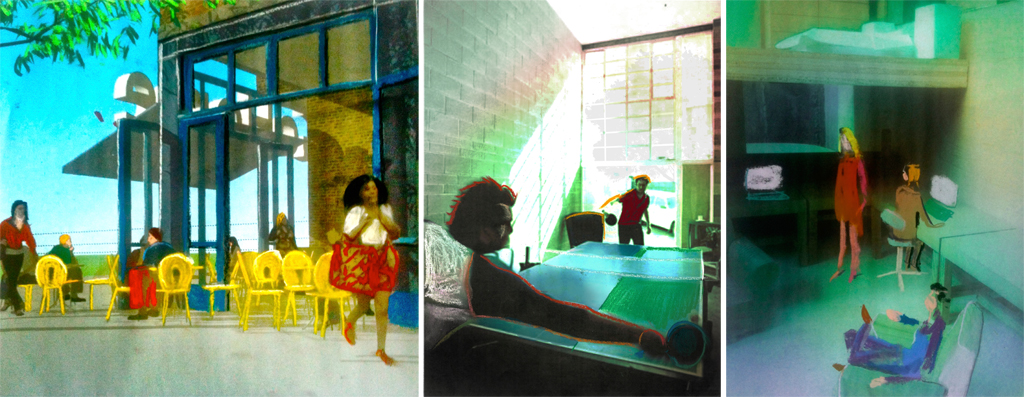GoHome: Shared housing tried and tested
A design study assesses the distribution of micro-units in residential high-rises to provide more rentable space.
Based on a shared housing model that McCormick and Smith have developed in San Diego over the past 30 years, the New York “GoHome,” designed for the site of the recent Micro Unit competition, seeks to address the problems associated with tiny units in a high-rise configuration: the poor ratio of corridors to rentable space, the low ceiling heights required to make high-rises efficient, the accessibility requirements that make large bathrooms consume valuable space and block cross ventilation, and the problems associated with shared common spaces.
The proposal creates units with a “Yin-Yang” section, possessing 10-foot average ceiling heights, corridors on only every other floor, foldaway accessible bathrooms, and open ends that create balanced light and cross ventilation. The 12-foot tall end of the room can be used for either storage or a lofted bed, gaining back the space normally lost to a hallway. The scheme is only possible to build because the lofts are technically suites in a two story, “three bedroom unit,” complying with the American with Disabilities Act and New York’s rule of three adults per household.
Upstairs, micro-lofts have something less than a kitchenette. No stoves or ovens are provided. Our residents prefer interesting space to full kitchens. The three-suite house would have only one full kitchen in the ground floor complying with zoning definitions of unit. The larger kitchens encourage friendships and dinner parties, but all the kitchens are within the private domain of each micro-loft. Most residents eat out as often as not. The building proposed has a breakfast house at the street, where we suspect many residents will run a tab.
The building’s strategy for common spaces comes from experience managing shared amenities in other GoHomes. To solve the social tensions and management expenses that can arise in shared spaces, the architects have moved the common spaces into the private domain. These augmented rooms belong to particular tenants and are shared as friendships develop.

Explore
Living small & going solo
Symposia on designing small-scale housing that's comfortable, efficient, and affordable
Roundtable: Deborah Gans, Rosalie Genevro, Brian McGrath, Mark Robbins, Carol Willis
Remembrances from five of the members of the original Vacant Lots organizing committee.
Tower, Slab, Superblock: Paris session
A recording of one of three sessions from a conference discussing social housing.

